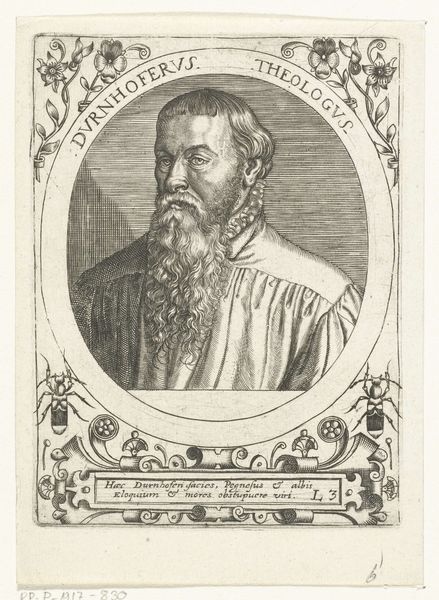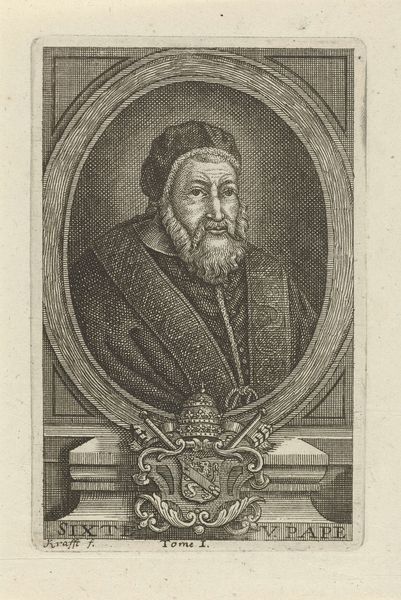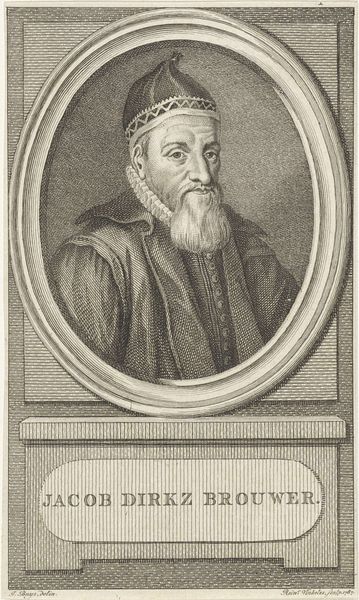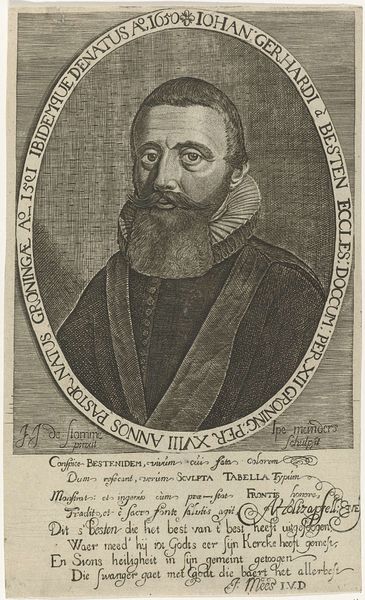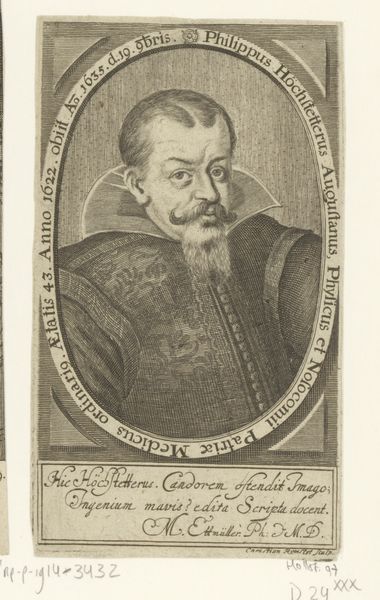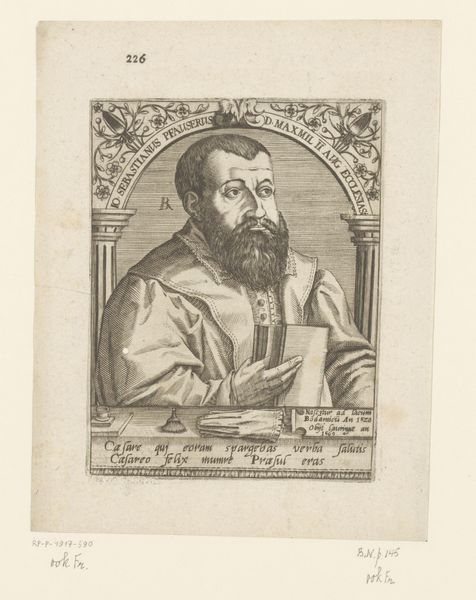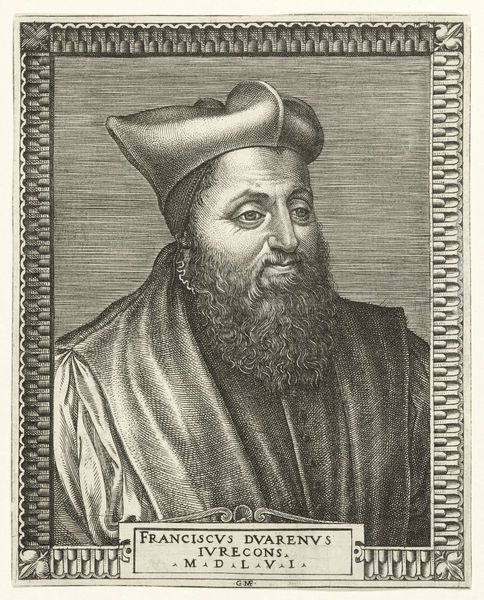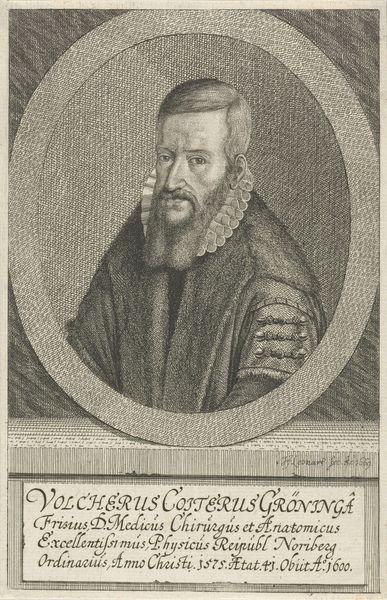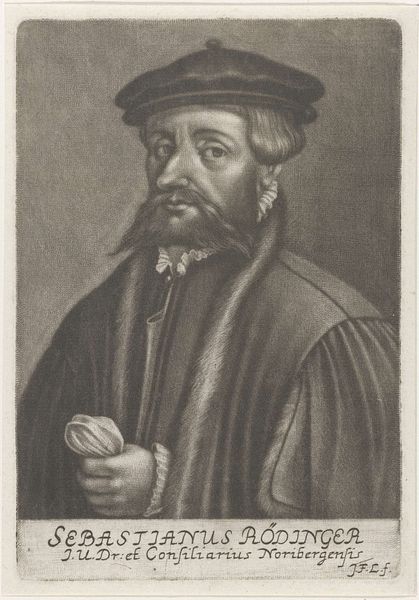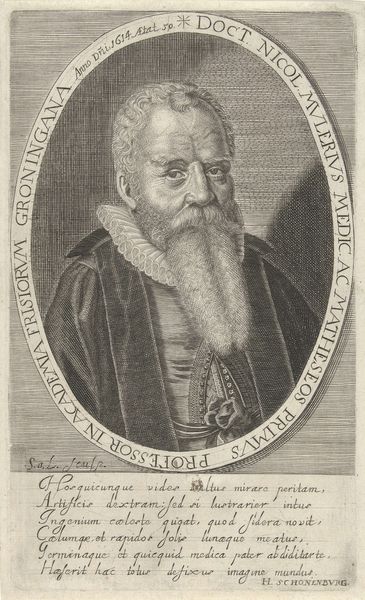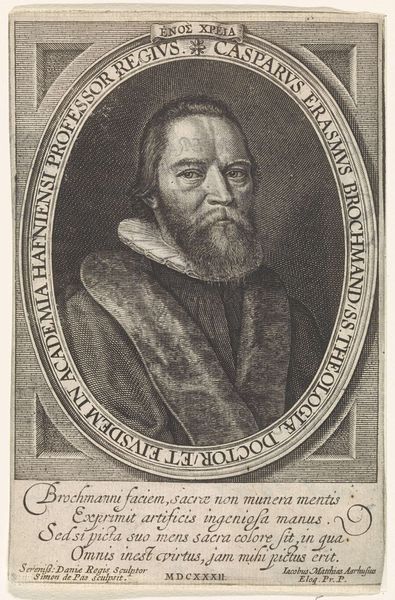
print, engraving
#
portrait
#
baroque
# print
#
old engraving style
#
line
#
engraving
#
realism
Dimensions: height 143 mm, width 97 mm
Copyright: Rijks Museum: Open Domain
Editor: This is Johann Friedrich Leonard’s “Portrait of Marcus Tucher,” made in 1672. It’s an engraving, giving it a very detailed, linear quality. I’m struck by the textures he’s able to achieve, especially in the fur coat. What stands out to you about the materials and production of this print? Curator: The engraving process is crucial. Consider the labour involved in creating this image, painstakingly incising lines into a metal plate. This isn't simply about representation; it's about the democratization of image production. Prints allowed for wider dissemination of portraits like this, catering to a growing merchant class. Who do you think Tucher was, and why might his portrait be desired on a mass-produced scale? Editor: I'm guessing he was someone important in the community – a wealthy merchant perhaps? The fact that this was an engraving suggests that multiple copies could be made, making it more accessible than a unique painting. Curator: Exactly! And think about the paper itself: its manufacture, trade, and accessibility at the time. This portrait exists because of a network of material production. It’s fascinating how this seemingly straightforward image is in reality the end product of a complex set of social and material relations. How does understanding the means of production shift your understanding of the artwork? Editor: It makes me realize it's not just about Tucher’s likeness, but also about the society and economy that made this portrait possible, and that this artwork itself becomes a commodity within the historical context. Thanks, this has provided a richer context for appreciating this print. Curator: Agreed, and that deeper understanding underscores how essential materials and labour are to shaping the very meaning of art.
Comments
No comments
Be the first to comment and join the conversation on the ultimate creative platform.
